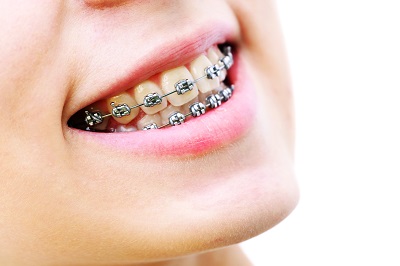
19
Oct
What is the Difference Between an Overjet and an Overbite?

Tooth positioning affects the appeal of your smile, dental function, and overall oral health. Malocclusion occurs when your teeth are not well aligned with adjacent teeth in the same arch or with teeth on the opposing jaw when you close your mouth. If left untreated, it puts you at risk for other oral health problems along with poor digestion from improper food chewing.
Two types of malocclusion occur as a result of jaw misalignment are overbite and overjet. While both cause a misshapen jawline, they are uniquely different. Read on to find out more about the difference between overjet and overbite and remedies for better oral health and overall well-being.
What is an Overbite?
An overbite occurs when the upper teeth overlap by more than 3 millimeters over the lower teeth. If you have an overbite, your teeth may wear down due to constant impact against each other. You can also suffer from jaw pain, speech problems, and even sleep apnea. In severe cases, incorrect positioning may cause teeth to knock against each other and damage the enamel and gums.
What Is an Overjet?
An overjet refers to the condition where the teeth on your upper jaw rest at an outward angle, causing them to extend far in front of the teeth on your lower jaw. An overjet not only affects the appeal of your smile but also makes chewing, speaking, and other oral functions difficult. Like an overbite, it may also result in jaw pain. You may also find it hard to fully close your lips due to the angle of the teeth.
What is the Difference?
Although an overbite and an overjet may appear the same, their main difference lies in the angle at which the upper teeth sit. An overbite is a vertical misalignment, while an overjet is a horizontal misalignment. With an overbite, the upper teeth point straight downwards, while they protrude diagonally against the lower teeth in an overjet. Note that it is possible to have both an overbite and an overjet at the same time.
How to Treat an Overbite and Overjet
The treatment options for an overbite and overjet depend on the severity of the condition. While an overjet may be more challenging to treat, it is still possible. It is advisable to seek orthodontic evaluation and treatment at an early age, preferably seven years. During this age, the teeth are still developing, making it easy to guide their development. For adults, some of the available treatment options include:
- Traditional Braces
- Invisalign®
- Veneers
- Crowns
- Bonding
Traditional Braces for Moderate to Severe Misalignment
Traditional braces are a highly effective treatment for teeth misalignment. They consist of metal wires and brackets which attach to your teeth to adjust them to the right position. Traditional braces can effectively correct severe misalignment and are ideal for all ages. Since conventional braces apply more force than other types of braces, they offer excellent results.
Invisalign® for Mild to Moderate Cases
Unlike traditional braces, Invisalign consists of clear trays that you fit over your teeth to adjust their position. Although Invisalign is removable, you have to wear them daily for at least 22 hours for the best results. Since they are invisible, they do not affect the appeal of your smile. Invisalign also offers better comfort and make it easy to clean your teeth.
Veneers for Cosmetic Corrections
Veneers are thin, tooth-colored, custom-made shells that attach to the surfaces of teeth to boost their appearance. They can correct uneven, misaligned, or misshapen teeth, as well as tooth discoloration and chips. Your dentists will buff off a small part of your enamel before attaching the veneers to ensure a perfect fit.
Veneers enhance the appeal of your smile as your dentist can match them to your preferred shade of white. Veneers are highly durable, stain-resistant, and do not irritate the gums.
Restorative Crowns
Dental crowns, also known as dental caps, are restorations that completely cover your teeth to enhance their appearance. Crowns can help even out misaligned teeth without needing braces. Your dentist will first trim down the misaligned teeth before placing the dental crowns. Crowns can last upwards of ten years, repair damage, and improve the overall appearance of your teeth.
Cosmetic Bonding
Bonding is a cosmetic procedure where your dentist applies resin to your teeth and molds them to give the appearance of straight, even teeth. It is a painless procedure ideal for mild misalignment and only requires one appointment. What’s more, the bonding material matches the surrounding teeth to give you a natural-looking smile. It also preserves your teeth as it doesn’t require removing enamel before application.
Take the First Step Today!
It is never too late to achieve your smile goals. If you suffer from dental misalignment, contact your dental professional and find out how to achieve a better and healthier smile!
The post What is the Difference Between an Overjet and an Overbite? first appeared on Dental Signal.
Share this Article

Dr. phan

Dr. Abel
Husband and wife duo Drs. Chuong Phan and Anna Abel lead the Abel, Phan, and Associates dental team.
Dr. Phan is a Howard University College of Dentistry graduate and has practiced for over 20 years. His favorite clinical procedures are orthodontic and endodontic treatments, including root canal therapy. He has been trained in many prestigious institutes. Dr. Abel graduated from the University of Maryland School of Dentistry and has over 20 years of experience. Her favorite procedures are cosmetic services like veneers, implants, and oral surgery. She has trained with top-level organizations.
Both doctors are regular volunteers at Northern Virginia Dental Clinic, providing care to low-income patients, for which they have received many honors. They have also volunteered to help disadvantaged communities, especially children, through many foreign missions.

